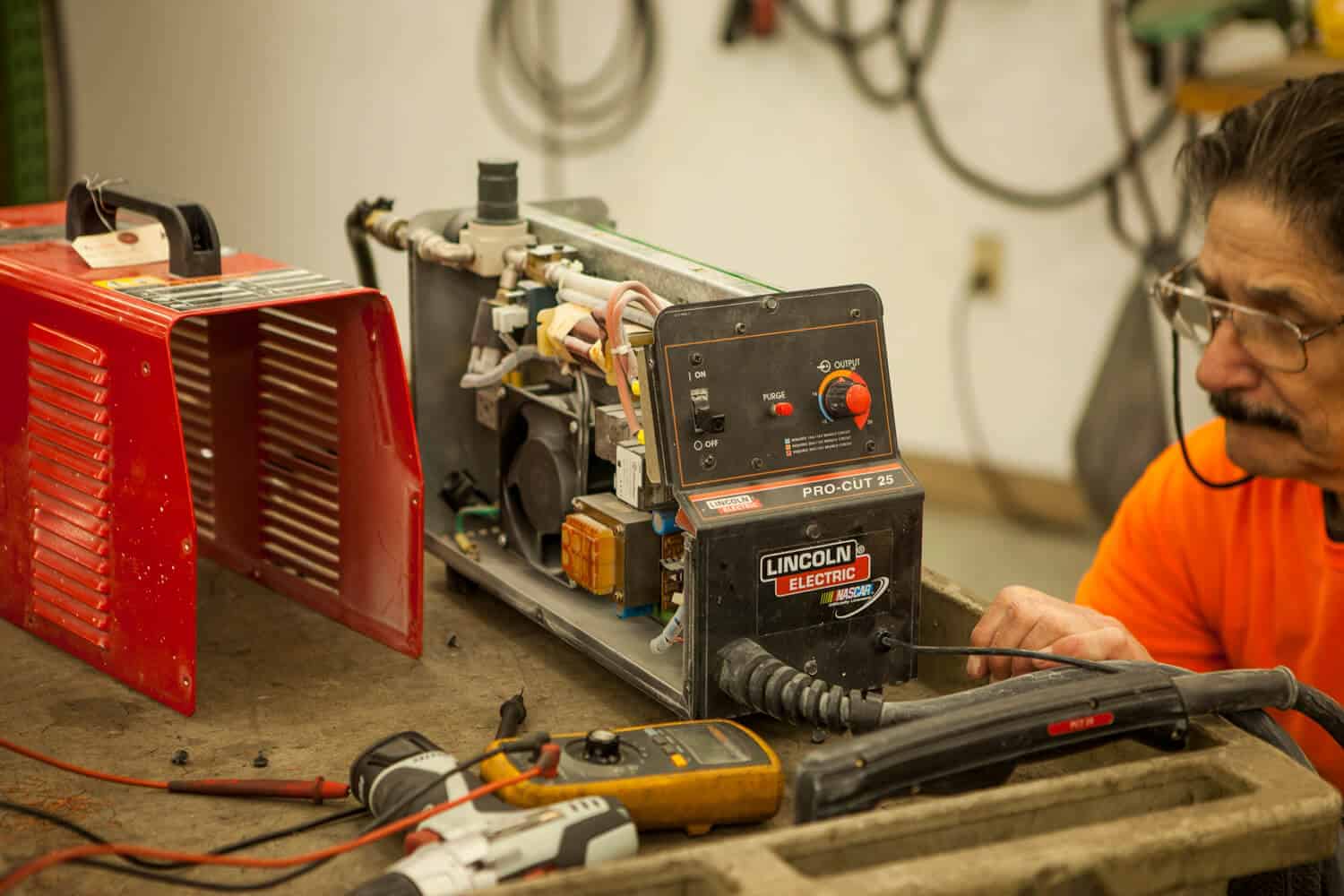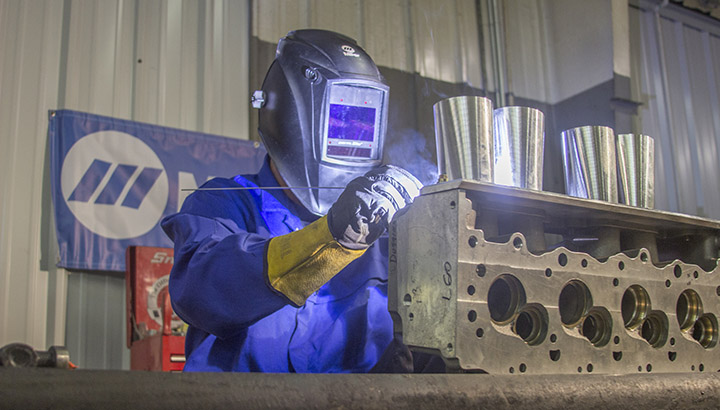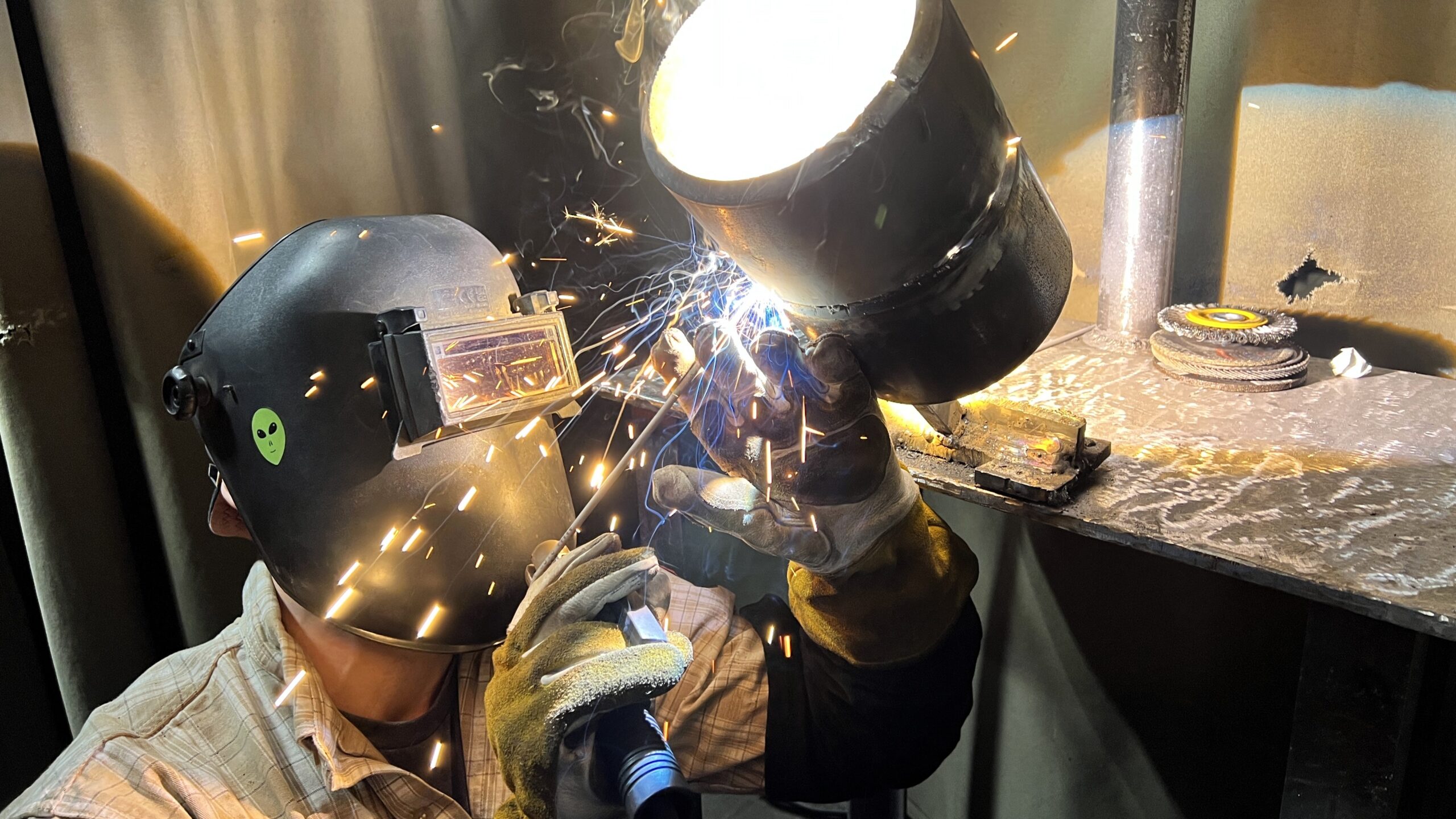Usual Welding Repair Work Issues and Just How to Address Them Effectively
Welding repair services commonly come across a series of concerns that can jeopardize the honesty of the end product. Usual problems include inadequate infiltration, porosity, and misalignment, amongst others. Each defect provides distinct challenges that need particular techniques for resolution. Understanding these problems is vital for welders aiming to enhance their skills and results. This conversation will certainly discover these usual welding repair work problems and effective approaches to resolve them.
Inadequate Infiltration
Insufficient penetration occurs when the weld metal fails to totally fuse with the base product, resulting in weak joints and prospective structural failures. This concern commonly comes from insufficient warmth input, wrong electrode angle, or incorrect welding speed. Welders may run into poor infiltration as a result of a miscalculation of the required specifications for a particular material thickness or type. Furthermore, contamination on the base product's surface can prevent reliable bonding, intensifying the issue. To deal with inadequate infiltration, welders should ensure proper settings on their tools and preserve a tidy work surface. Routine evaluation of welds is recommended to recognize any shortages early, permitting for timely adjustments and the prevention of compromised architectural integrity in bonded assemblies.
Porosity
Porosity is a common issue in welded joints that manifests as little gas bubbles trapped within the weld metal. This defect can endanger the stability of the weld, resulting in decreased strength and possible failing under stress. Welding. Porosity typically develops from contamination, wetness, or inappropriate welding strategies, which permit gases to run away right into the liquified weld pool. To deal with porosity, welders should ensure proper surface preparation, maintain a clean functioning setting, and use suitable welding specifications. In addition, picking the best filler product and shielding gas can minimize gas entrapment. Regular assessment and screening of welds can assist determine porosity early, assuring timely corrective actions are taken, consequently preserving the quality and reliability of the welded structure
Imbalance
Imbalance in welding can develop from different elements, consisting of incorrect configuration and thermal expansion. Recognizing the origin is necessary for efficient resolution. Numerous correction strategies are offered to realign parts and assure architectural honesty.
Reasons of Misalignment
Welding misalignment commonly comes from a range of underlying concerns that can compromise architectural integrity. One primary cause is inappropriate fit-up of elements prior to welding, which can cause spaces and irregular surfaces. Variations in thermal development throughout the welding procedure can likewise cause distortion, specifically if the products being signed up with have various coefficients of growth. In addition, insufficient securing and fixturing may fail to hold components safely in place, causing activity throughout welding. Improperly maintained devices, consisting of welding devices and tools, may introduce disparities in the weld bead, more contributing to imbalance. Operator error, stemming from insufficient training or experience, can additionally play a considerable function in creating misaligned welds.

Modification Techniques Readily Available
Resolving misalignment effectively requires a mix of corrective strategies customized to the particular problems handy. One common technique is the use of jigs or components to hold elements in the correct placement throughout welding, ensuring consistent placement. Additionally, pre-heating the products can help lower distortion and improve fit-up. For significant imbalance, mechanical realignment methods, such as using hydraulic jacks or clamps, can be employed to remedy the position prior to welding. Post-weld heat treatment may also be necessary to relieve stress and anxieties created by misalignment. Careful assessment and modification throughout the arrangement phase can prevent imbalance concerns from ending up being significant issues, advertising a smoother welding process and enhancing general structural integrity.
Distortion
Distortion is a common obstacle in welding that can develop from various aspects, including uneven home heating and cooling. Understanding the sources of distortion is essential for executing reliable prevention methods. Addressing this problem not just improves architectural stability yet also enhances the overall quality of the weld.
Reasons for Distortion
When based on the intense warm of welding, products usually undergo modifications that can result in distortion. This sensation mainly occurs from thermal development and tightening throughout the welding process. As the weld area warms up, the product increases; upon cooling, it acquires, which can produce internal stresses. In addition, irregular home heating across a work surface can exacerbate these stress and anxieties, leading to bending or bending. The kind of material also plays a significant role; steels with varying thermal conductivity and coefficients of development might react differently, causing uncertain distortions. In addition, bad joint style and insufficient fixturing can add to imbalance throughout welding, enhancing the probability of distortion. Understanding these reasons is crucial for effective welding repair service and prevention techniques.
Avoidance Techniques
Efficient avoidance techniques for distortion throughout welding concentrate on controlling heat input and guaranteeing proper joint style. Keeping a constant warmth input helps to decrease thermal expansion and contraction, which can cause distortion. Utilizing strategies such as preheating the workpiece can also minimize the temperature slope, advertising uniform heating. In addition, picking ideal joint designs, such as T-joints or lap joints, can enhance stability and reduce stress focus. Applying proper fixturing to protect the workpieces in position further aids in maintaining placement during the welding process. Staggered welding series can disperse warmth much more equally, preventing local distortion. By using these techniques, welders can substantially decrease the likelihood of distortion and improve the total high quality of their welds.
Fracturing
Fracturing is a common concern encountered in welding repair work, frequently arising from numerous variables such as inappropriate air conditioning prices, product option, or insufficient joint preparation. The event of splits can considerably jeopardize the integrity of the weld, bring about prospective failures throughout operation. To resolve this issue, welders should initially analyze the source, making sure that products are compatible and properly chosen for the certain application. Furthermore, regulating the cooling price during the welding process is vital; fast cooling can induce stress and bring about cracking. Appropriate joint layout and preparation also add to decreasing the risk. Implementing in 1 welder plasma cutter these approaches can enhance weld quality and sturdiness, inevitably decreasing the possibility of breaking in finished weldments.

Incomplete Blend
A considerable issue in welding repairs is incomplete combination, which occurs when the weld metal does not appropriately bond with the base product or previous weld passes - Belgrade. This cst 280 problem can bring about weak points in the joint, potentially jeopardizing the stability of the welded structure. Elements adding to insufficient fusion include not enough warm input, incorrect welding strategy, and contamination of the surfaces being signed up with. To resolve this issue efficiently, welders ought to guarantee correct pre-weld cleansing and surface prep work, in addition to change their welding criteria to attain adequate infiltration and fusion. Routine inspection during the welding process can also assist determine insufficient fusion early, permitting for prompt restorative measures to boost the overall quality of the weld
Overheating
While welding fixings can enhance structural honesty, overheating provides a significant obstacle that can result in product destruction. Too much warmth during welding can alter the mechanical residential or commercial properties of metals, leading to minimized stamina, enhanced brittleness, and warping. This phenomenon is specifically critical in high-stress applications where architectural dependability is critical. Determining overheating can include visual evaluations for staining or distortion, along with checking temperature during the welding process. To mitigate the dangers associated with overheating, welders should employ suitable methods, such as regulating heat input, changing traveling rate, and using suitable filler products. In addition, applying pre- and post-weld warmth therapies can aid bring back product homes and enhance the overall top quality of the repair service, guaranteeing lasting efficiency and safety and security.
Regularly Asked Concerns
What Are the Typical Indications of a Welding Issue?

Exactly How Can I Check My Welds for High quality?
To check welds for high quality, one can use visual assessments, ultrasonic testing, and radiographic approaches. Extra resources Each strategy guarantees architectural honesty, identifies problems, and validates adherence to specified standards, eventually boosting the reliability of the bonded joints.
What Security Safety Measures Should I Take While Welding?
When welding, one must prioritize security by wearing proper personal protective equipment, making sure appropriate air flow, protecting combustible materials away, keeping a clean work space, and knowing surroundings to stop accidents and injuries.
Can I Repair a Weld Without Remodeling the Entire Joint?
Repairing a weld without redesigning the entire joint is feasible, relying on the damages (Montana Mobile Welding and Repair Belgrade Welding). Methods such as grinding, including filler material, or using a welding process can properly resolve certain defects while preserving the surrounding framework
What Tools Are Necessary for Effective Welding Fixes?
Vital tools for effective welding repair services consist of a welding equipment, cord brush, mill, safety gear, clamps, and filler products. Each tool plays a vital role in guaranteeing top quality and safety during the repair work process. Porosity normally occurs from contamination, dampness, or incorrect welding methods, which enable gases to run away right into the molten weld swimming pool. Badly conserved tools, including welding machines and devices, may introduce disparities in the weld bead, more adding to misalignment. When subjected to the extreme heat of welding, products commonly undergo modifications that can lead to distortion. Fracturing is a typical problem experienced in welding repair services, commonly resulting from different elements such as inappropriate cooling prices, material option, or insufficient joint preparation. A considerable problem in welding fixings is incomplete blend, which takes place when the weld steel does not properly bond with the base product or previous weld passes.